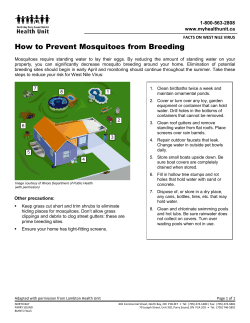
Malleefowl (Leipoa ocellata)
Malleefowl (Leipoa ocellata) Conservation Status NATIONAL: Vulnerable (Environment Protection and Biodiversity Conservation Act 1999) Description Malleefowl are quiet, shy, ground-‐dwelling birds about the size of a domestic chicken. They have a mottled rufous, grey-‐bronze plumage on their back and wings, with a creamy white underbelly. They fly only when disturbed, to escape danger or to reach their perch. They are hardly ever seen as they freeze if disturbed, relying on their intricately patterned as camouflage, or else fade silently and rapidly into the undergrowth. Habitat Usually found in semi-‐arid to arid shrublands, and low woodlands dominated by mallee and/or acacia. Distribution Historically the Malleefowl was distributed over much of the southern half of Australia from the west coast to the Great Dividing Range. It was widespread in every mainland state except Queensland. Their range and distribution is thought to have declined by about 20 percent since European settlement. Diet Malleefowl feed on a variety of seeds, flowers, fruits, tubers, fungi and invertebrates. Breeding Malleefowl are usually monogamous and pair for life. Pairs spend most of their time with each other, even when not breeding. The male birds take responsibility for building and maintaining the nest. Malleefowl build unique nests, made from large mounds of sand and leaf litter. These nests can reach 5 metres in diameter and 1 metre in height and require up to 300 days of construction and ongoing maintenance. The male establish and begin preparing the area for the mound before the mating season. The male will build windrows around the nest and line it with organic matter and begin to build up the mound. After rain, he turns and mixes the material to encourage decay and, if conditions allow, digs an egg chamber in August. The female will then lay her eggs around September. The couple will monitor the nest and adjust the temperatures accordingly so optimum conditions for hatching occur. This is a full-‐time job with the male Malleefowl repeatedly checking the nest throughout the day. Temperature regulation is achieved by opening and closing the nest, and by adding and removing leaf litter. Chicks hatch within the nest mound and take 2-‐15 hours to push their way out of the mound. The chicks are provided with no parental care after hatching. The chicks can run and find food immediately and are able to fly within a day. Threats Changing fire regimes, the destruction and fragmentation of their habitat, and predation by introduced species such as the Red fox. Mallefowl are also particularly vulnerable to the increasing frequency and severity of drought. Their specific habitat requirements and lack of mobility makes it harder for them to adapt to climate change than some other bird species. Recovery Plan An ongoing national recovery plan is working on: habitat protection, restoration and linkage; fire management; predator reduction; research and monitoring; and captive breeding. FAME, in partnership with the Centre of Environmental Management from the University of Ballarat, funded a project to protect a population of the endangered Malleefowl at Nanya Station in southwestern NSW. The project surveyed and monitored existing Malleefowl nests to increase understanding of the habitat needs of this bird, and promote survival and breeding by reducing predator pressure (foxes and cats) on the Station. References & More Information Department of the Environment and Heritage 2006. Threatened Species Day fact sheet: Malleefowl (Leipoa ocellata). Commonwealth of Australia. http://www.environment.gov.au/biodiversity/threatened/publications/tsd06mallee-‐fowl.html Victorian Malleefowl Recovery Group www.malleefowlvictoria.org.au Oct-‐13 www.fame.org.au
© Copyright 2025





















